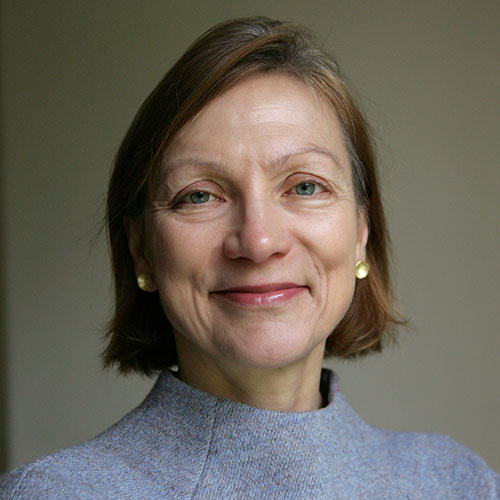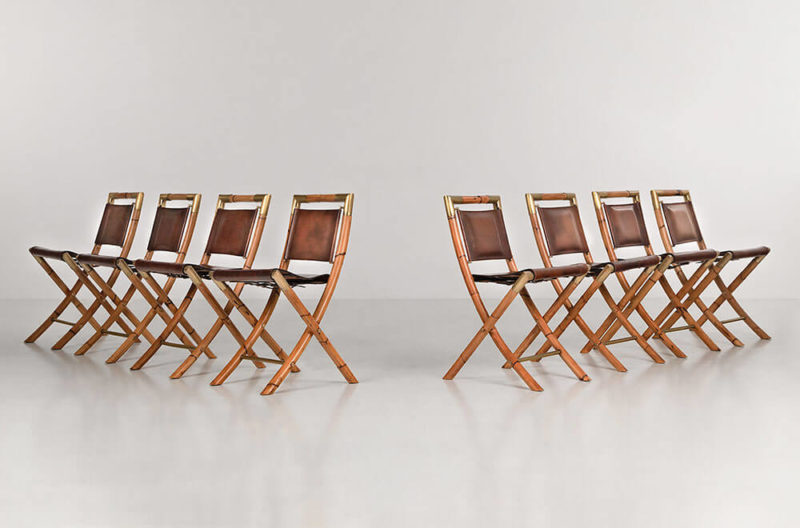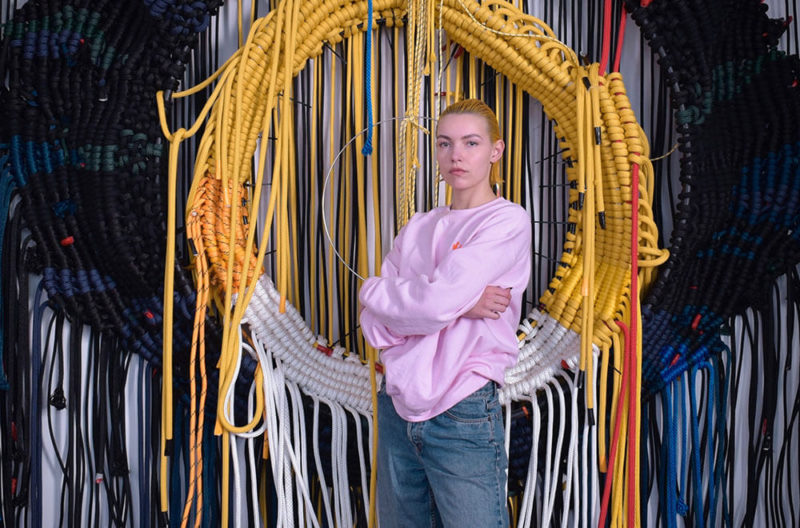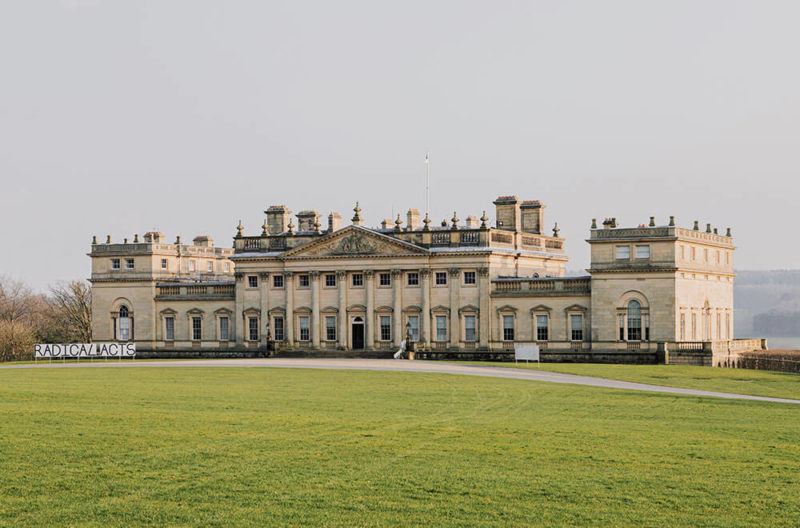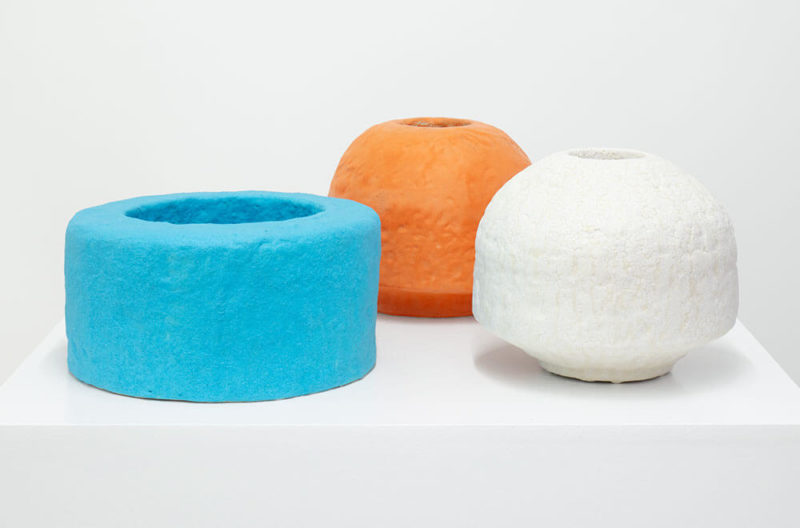‘Back to Earth’, 2021
Johannes Nagel
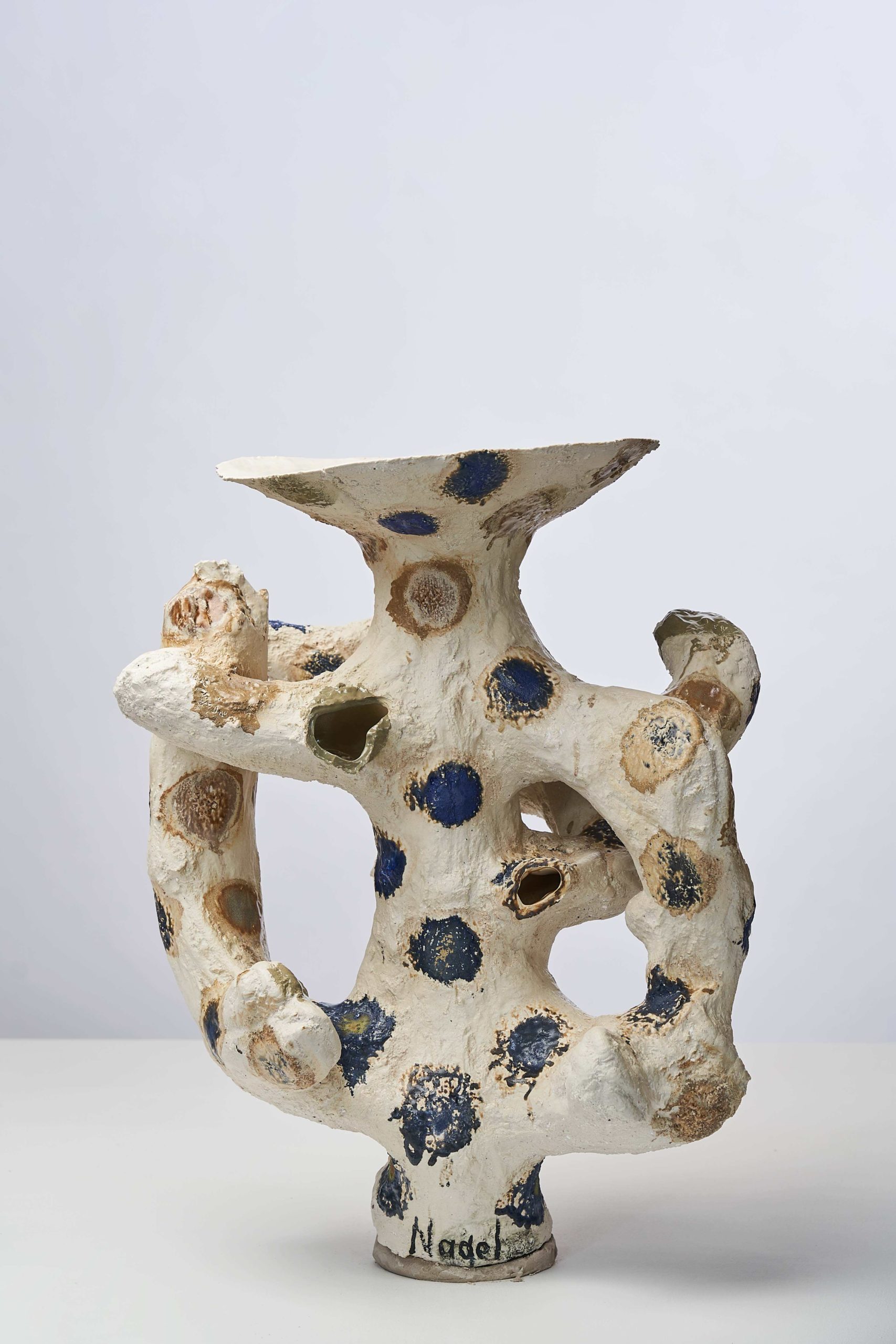
Johannes Nagel, ‘Back to Earth’, 2021
COURTESY: Johannes Nagel & Gallery FUMI
‘BACK TO EARTH’ is, for ceramic artist Johannes Nagel, the centrepiece of his new exhibition at Gallery FUMI. Titled ‘FARBELD’, a name that comes from the German word for ‘colourfield’, the whole exhibition is inspired by the experiments with new colour combinations and glazes that Nagel undertook last year. This vessel, created out of porcelain through Nagel’s distinctive sandbox method, not only offers the thrill of its irregular, wriggling, questing organic form but also provides a three-dimensional canvas for a playful display of colour. Nagel says, “It is the closest to painting that I have come.”
‘Back to Earth’ is the culmination of a series of transformations, governed equally by chance and deliberate choice. First, Nagel creates what he refers to as ‘an inverted sculpture’ in a box of sand, digging out holes and tunnels with his arms in an intuitive process honed by practice. While this looks as graceful and easy as random gesture to the audience of his finished pieces, the building of three-dimensional negative space requires a higher degree of focussed attention than hand building, the process he uses for his stoneware vessels. As Nagel says, counterintuitively, “I am subtracting, but the sculpture is growing”.
Into this mould, Nagel then pours layers of liquid porcelain until he has achieved the thickness required, before digging the form, once it has hardened, out of the sand. Accident plays a considerable role. “I am giving away control on purpose”, Nagel says, as he describes the way sand trickles unpredictably into the space, creating unexpected surface textures.
Looking at ‘Back to Earth’, in particular, Nagel says, “The form wants to become very organic, like it has grown.” He has countered that tendency by using a vase template for the neck of the sculpture, turning the object definitively into a vessel, whilst also embracing the broken holes where an additional limb failed to survive the firing process. Nagel says, “You read it as an interrupted volume – it makes it more like a painting on one side.”

Johannes Nagel, ‘Back to Earth’, 2021 (detail)
COURTESY: Johannes Nagel & Gallery FUMI
What gives ‘Back to Earth’ its particular energy however is the surface pattern – what Nagel refers to as “the serendipity of the painting.” Rather than using glaze, as potters do, in order to work with and enhance the formal properties of the pot, Nagel has deliberately used the surface of this vessel as a blank canvas. After months of analysis, creating precise test fields of colour, Nagel then applied his chosen glazes in bold splodges, rather than careful brush strokes. As with all glazes, he can never be entirely sure what actual colour will emerge from the firing: “there is always quite a high degree of surprise when I take pots out of the kiln, ” he says.
In this case, he was delighted by the unexpected tones. “They are a sort of non-colour,” he suggests, of lichen-like, beige, spots. To my eye, his palette here recalls the paintings of Giorgio Morandi, whose careful gatherings of vessels are vivid because they are the colour of clay, sand, mud and sky. If Morandi makes paintings of vessels, Nagel has here turned vessels into paintings, a metamorphosis that both lifts the vessel from the earth and celebrates the elements it is born from. The painterly flourish of his signature seals the creative act.

Johannes Nagel at his exhibition ‘FARBELD’ at Gallery FUMI
COURTESY: Johannes Nagel & Gallery FUMI
FARBFELD | Johannes Nagel runs at Gallery FUMI from 1st April – 7th May 2022.
